Diagnose problems with a chlorinator, replace damaged parts, or get a quote for a full chlorinator upgrade.
customers supported
qualified repair technicians
years in operation
Gold Coast-owned
If you’re a homeowner, use our troubleshooting guide to rule out easy fixes.
A ‘no flow’ or ‘low flow’ reading means that your chlorinator isn’t getting enough water.
Normally, that’s caused by a blockage in your skimmer basket or pump basket.
If both are clear, get in touch with us for a referral to an experienced pool technician.
Calcium carbonate or ‘scale’ builds up on your salt cell when your pool water isn’t balanced properly.
Remove the salt cell from its housing and bring it to our Varsity Lakes workshop.
We’ll clean off the scale, test the electrodes, and, if necessary, supply you with a new salt cell (as well as any chemicals you need to re-balance your water).
Unless you’ve lost water from your pool, your salt levels should remain stable (salt doesn’t evaporate).
That means most ‘low salt’ readings are actually caused by a faulty probe or a failing salt cell.
If your pool’s free chlorine levels are too low, it’s probably caused by poor balancing – not enough salt, stabiliser, and/or sunscreen.
Test your water with at-home testing equipment to find out what chemicals you need to add.
If your water is balanced correctly, you might need to adjust your chlorinator’s settings to increase its output or clean your salt cell.
Low output can also be caused by other issues, like a failing salt cell or low voltage.
Ask us for a referral to an experienced pool technician – they can help you work out whether you need to bring your chlorinator in for repairs or not.
If your power is on, your fuses aren’t tripped, and all visible wires are intact, the most likely cause is a damaged printed circuit board (PCB).
Replacing a PCB correctly can be complex – get in touch with us for a quote and estimated lead times.
‘It’s cheaper to just use chemicals than replace my chlorinator.’
If your chlorinator isn’t working, it can be tempting to switch back to manual sterilisation.
But most chlorinator issues can be fixed for far less than the cost of a replacement – you just need the right technician.
We’ll refer you to a fully licensed electrical fitter who can bring your chlorinator to us for a full diagnosis and repair.
With in-stock parts from leading brands like AstralPool and Pentair, your pool could be back up and running in just days.
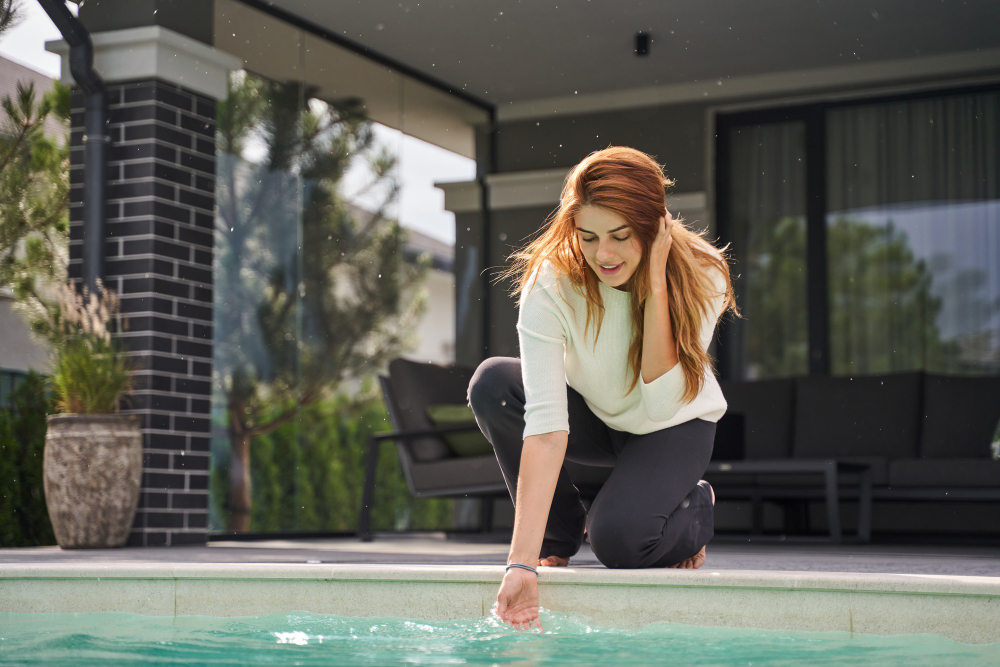
You notice something wrong with your chlorinator.
If you’re confident removing the chlorinator yourself, you can do so.
Otherwise, you can call us for a referral to a pool technician in your area.
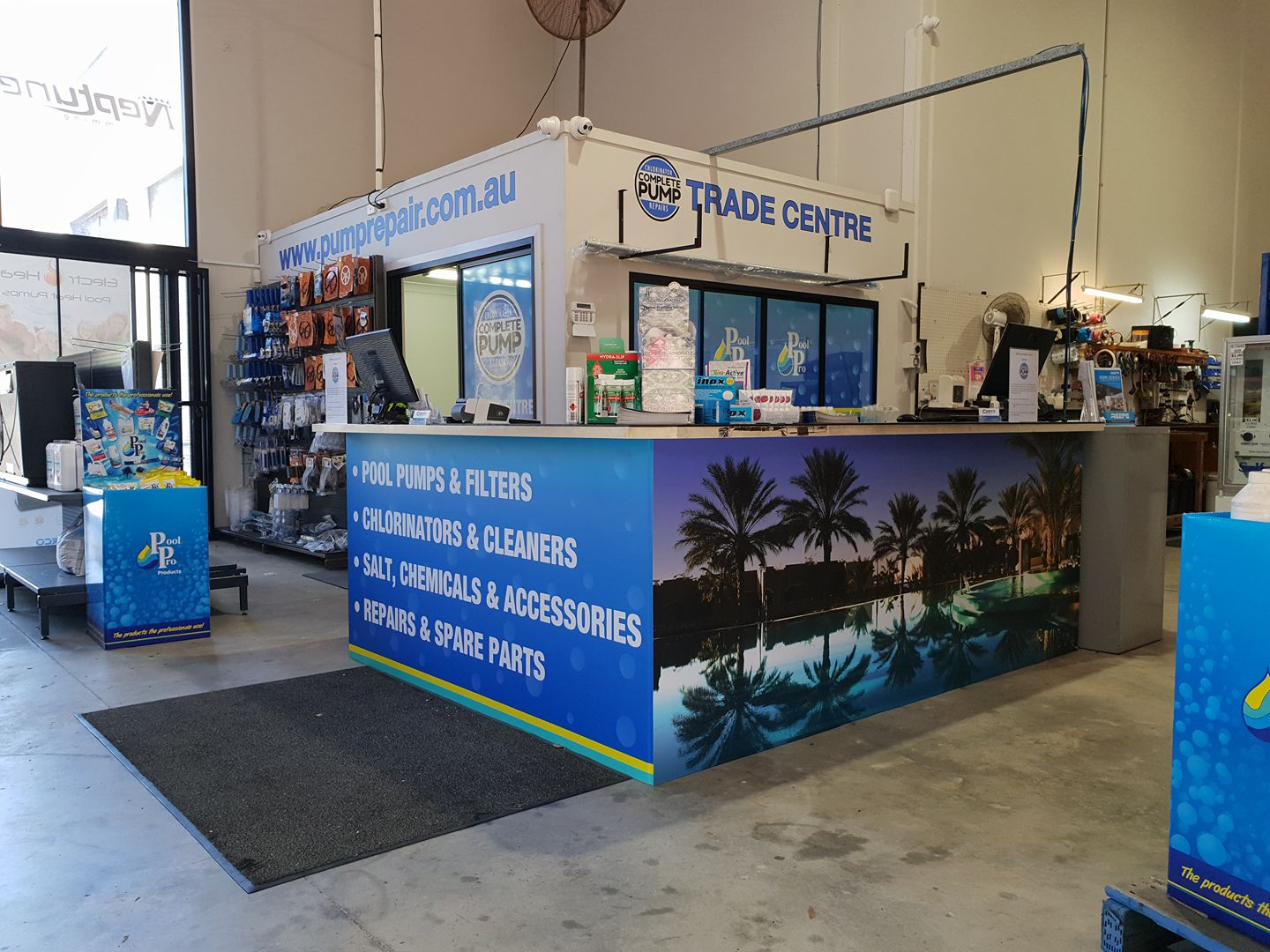
You bring the chlorinator into our workshop for a strip-and-quote diagnosis.
We’ll advise whether a repair or replacement is cheapest.
If you already know what you need, you can order new parts over the phone or via email.
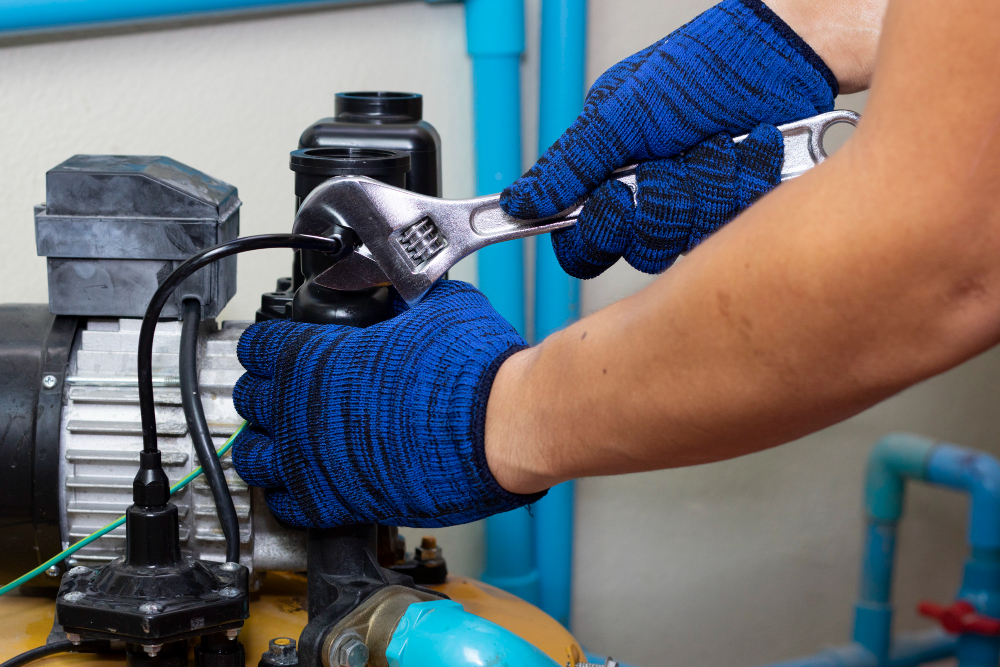
If we have the right part(s) in stock, we’ll provide a fixed quote and get to work.
Otherwise, we’ll estimate lead times and order the part(s) from our suppliers.
We’ll contact you as soon as your repaired part is ready for collection.
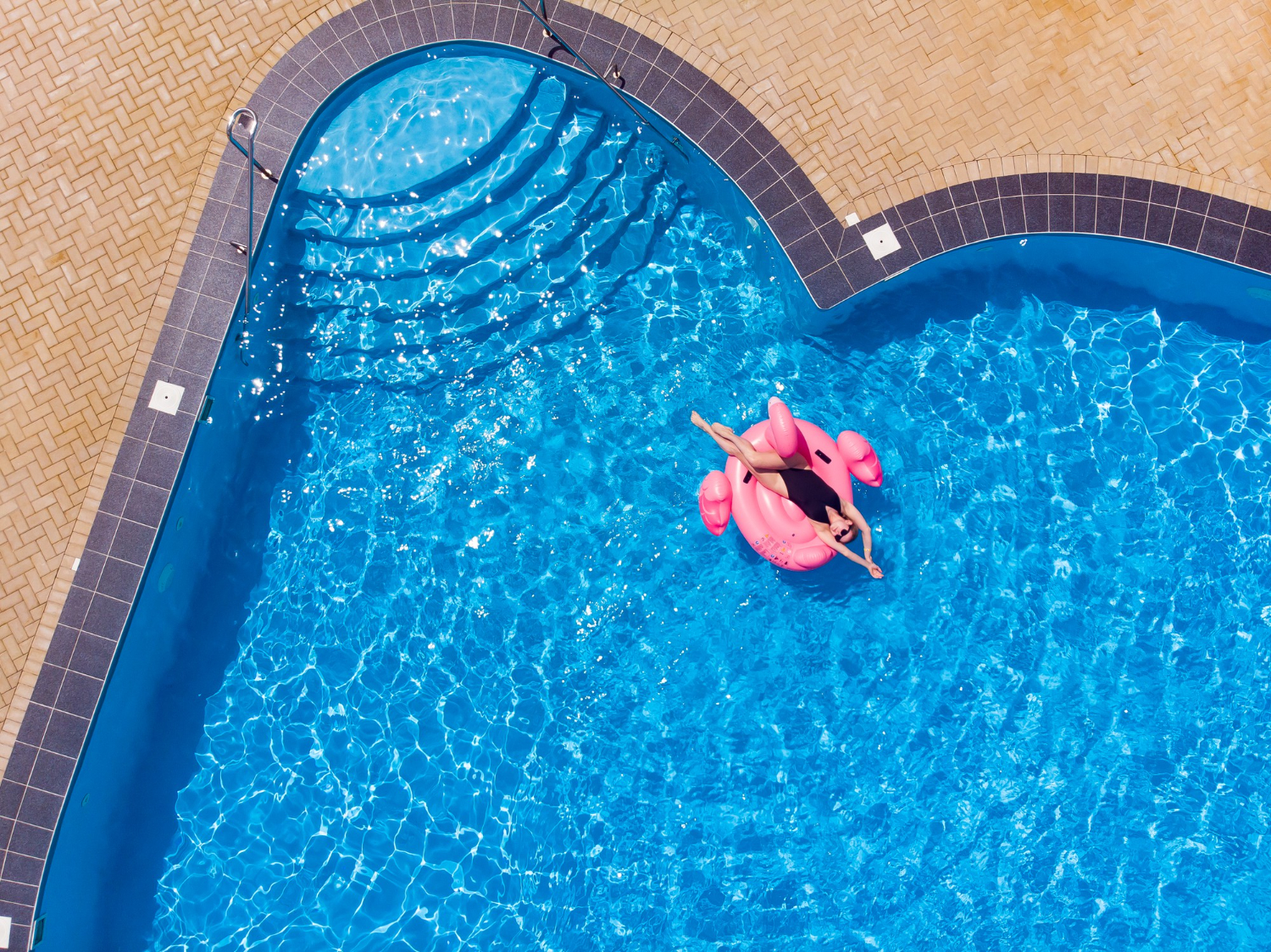
A client’s saltwater chlorinator needs repairing or replacing.
The problem could be anything from a calcified salt cell to a faulty circuit board.

You bring the chlorinator into our workshop for a strip-and-quote diagnosis.
We’ll advise whether a repair or replacement is cheapest, and provide you with a diagnostic report you can share with your client.
If you already know what you need, you can order new parts over the phone or via email.

If we have the right part(s) in stock, we’ll provide a fixed quote and get to work.
Otherwise, we’ll estimate lead times and order the part(s) from our suppliers.
We’ll contact you as soon as your repaired part is ready for collection.
‘Fast, Professional and Effective’
Our customers say it best.
We do one thing: keep pools running at their best.
That means skilled repair technicians, reliable parts, and high-purity chemicals – all available at our Gold Coast workshop.
Repairing a chlorinator is almost always the cheapest and fastest option.
We’ll never try to upsell you expensive parts or unnecessary replacements.
We’re not a big franchise that sees you as just another ticket.
We’re owned by Gold Coast locals and we’ve been supporting the SEQ community for over 20 years.
We’re approved warranty agents for leading pool brands.









A saltwater pool isn’t free of chlorine.
Instead, your chlorinator uses a chemical process called electrolysis to convert the salt to chlorine.
It’s how your water stays free of pathogens and algae.
Even though you can manually ‘shock’ your pool by adding liquid chlorine, you’d need to do it every day or two to keep your water clean.
It’s much cheaper and easier to just repair or replace your chlorinator every 3 to 5 years.
Think something could be wrong with yours?
Have an electrical fitter remove it so you can bring it to our Gold Coast workshop for a strip and quote.
Sun exposure.
Bathing load.
Temperature.
Lots of factors can impact a chlorinator’s effectiveness – and the safety of pool water.
With products from leading brands like Pentair Onga, PoolPro, and Crystal Aquatic Systems, we’ll help you upgrade to the right-sized chlorinator for your or your client’s pool.
We can also convert older chlorinated pools to saltwater pools, which means less chemical handling and a better swimming experience.
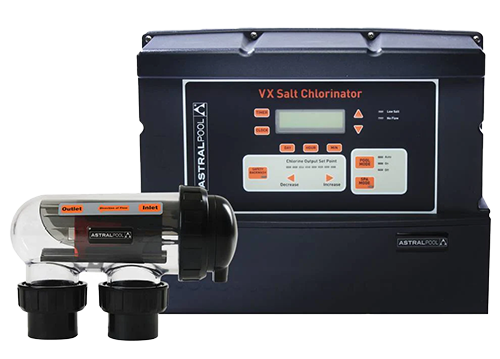
Our workshop is located at 490 Scottsdale Drive in Varsity Lakes. We support tradies and homeowners across Queensland and northern New South Wales with new chlorinators and repairs, but we don’t do callouts or site visits.
We’re authorised warranty agents for pumps from Crystal Clear, Pool Pro, Waterco, Pentair, Zodiac, and AstralPool. If your chlorinator is from one of those brands, our technicians can work on it without compromising your warranty.
A saltwater chlorinator converts the salt in your pool to chlorine. When your pump circulates your pool’s water, it’s filtered first by your skimmer basket and then by an ultra-fine filter (which, depending on your filter brand, can trap particles as small as 3 microns).
The water then passes through your chlorinator’s salt cell, which contains anodes and cathodes. When an electric current travels from the anode to the cathode, it converts the salt (sodium chloride) in the water to chlorine gas. The chlorine gas dissolves in the water, forming hypochlorous acid and hypochlorite ions (free chlorine).
That free chlorine is then transported back to your pool, where it sanitises the water by breaking down the cell walls of bacteria (oxidisation). It also reacts with amines (products of sweat and urine), forming chloramines, which can’t disinfect your water and form that unpleasant chlorine smell you probably associate with public pools.
UV radiation from sunlight can also break down free chlorine into chloride ions, which won’t sanitise your water (but will end up re-bonding with the sodium ions generated by the salt-to-chlorine conversion process). It’s why some people recommend running your pump on hot days – without ongoing chlorination, you could risk free chlorine levels dropping below what you need to sanitise your water (and warm, still water is the perfect recipe for fast bacteria and algal growth).
You can prevent UV degradation by adding a stabiliser like cyanuric acid, which bonds with chlorine and protects it from UV radiation.
With good water balancing, most saltwater cells can last around 5 years. Cells can die earlier if the water’s pH is too high or if it contains too much calcium. Both can lead to calcium carbonate (scale) on the cell’s electrodes, which acts as an insulator that can damage anode coatings and slow chlorine production.
In other words: make sure your water is being regularly tested and balanced. It’s a lot cheaper than replacing your cell every 12 months.
Like any pool component, choosing a reputable, market-leading brand like Pentair or AstralPool over a no-name chlorinator will pay for itself. Higher-quality chlorinators last longer, chlorinate your pool more effectively, and have better electronics.
Depending on the brand, the salt cell anodes will also be made with a good combination of metals (such as a titanium core and a coating of around 80% ruthenium oxide and 20% iridium). Because those rare earth metals tend to be expensive, generic manufacturers sometimes use cheaper combinations that don’t perform as well.
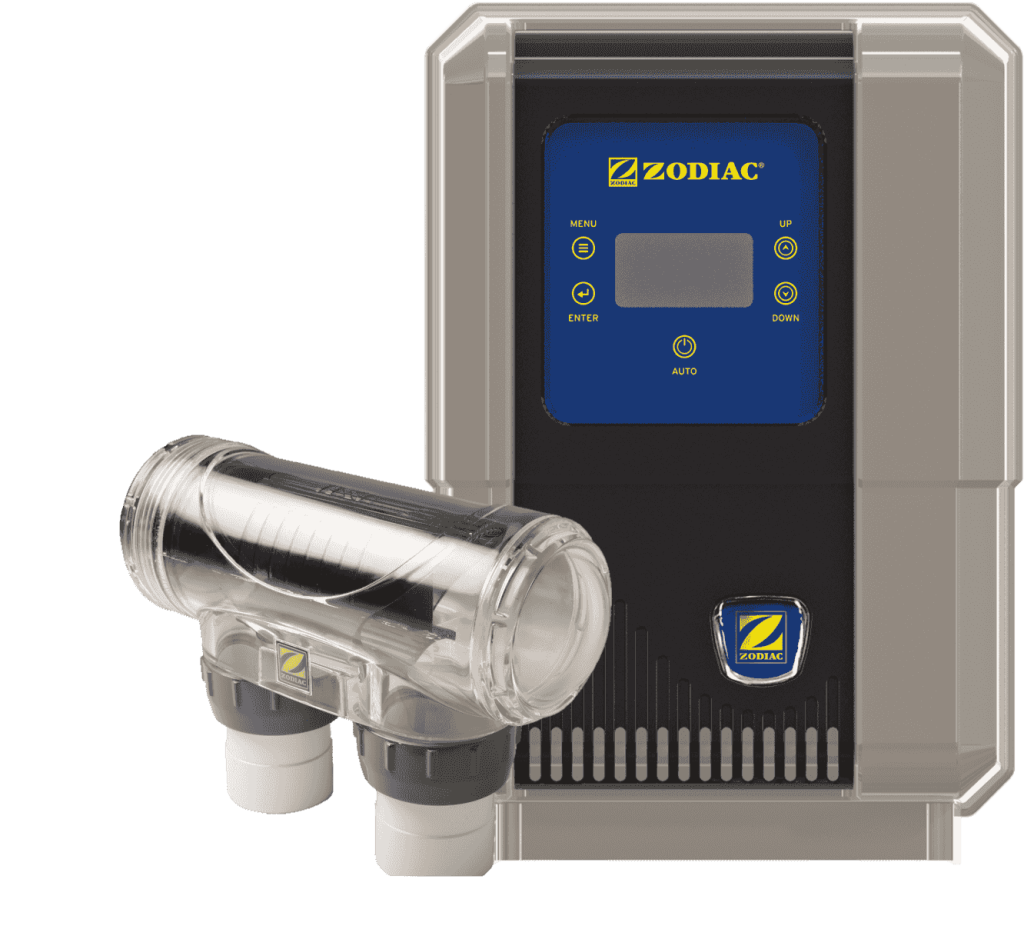
Get a fixed-price quote and lead time for any repair, replacement, or new part.
Services
Brands
© 2025 CPCR Trade Centre. Privacy Policy. Website By iOnline.